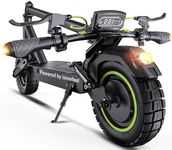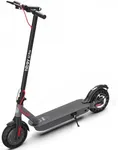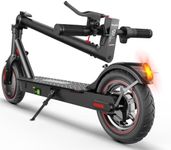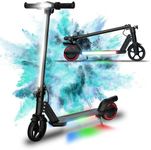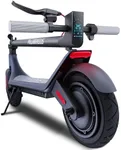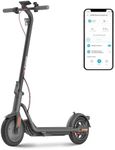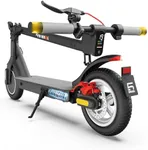Buying Guide for the Best Electric E Scooters
Choosing the right electric scooter can make your daily commute or leisure rides much more enjoyable and convenient. It's important to think about how and where you'll use the scooter, such as for short city trips, longer commutes, or just for fun. By understanding the main features and how they relate to your needs, you can find a scooter that fits your lifestyle and keeps you safe and comfortable.RangeRange refers to how far the scooter can travel on a single charge. This is important because it determines how much you can use the scooter before needing to recharge. Scooters with a shorter range (up to 15 km) are suitable for quick errands or short commutes, while mid-range models (15-30 km) are good for moderate daily use. Long-range scooters (over 30 km) are best for longer commutes or if you don't want to charge often. Think about your typical travel distance and choose a range that covers your needs with some extra buffer.
Top SpeedTop speed is the maximum speed the scooter can reach. This matters for both safety and convenience. Lower speeds (up to 20 km/h) are safer and often required by local laws, making them ideal for beginners or crowded areas. Medium speeds (20-30 km/h) offer a balance for most users, while higher speeds (over 30 km/h) are for experienced riders or open areas. Consider your comfort level and local regulations when deciding on the right top speed.
Weight and PortabilityThe weight of the scooter affects how easy it is to carry, especially if you need to take it on public transport or up stairs. Lightweight scooters (under 12 kg) are easy to carry but may have fewer features. Medium-weight models (12-18 kg) balance portability and sturdiness, while heavier scooters (over 18 kg) are more robust but harder to move around. Think about how often you'll need to carry your scooter and pick a weight that matches your routine.
Motor PowerMotor power, measured in watts, affects how well the scooter handles hills and how quickly it accelerates. Lower power (up to 250W) is fine for flat surfaces and lighter riders. Medium power (250-500W) is suitable for moderate hills and average users, while higher power (over 500W) is best for steep hills or heavier riders. Consider the terrain in your area and your own weight to choose the right motor power.
Tire Type and SizeTires can be solid or pneumatic (air-filled), and their size affects ride comfort and stability. Solid tires are puncture-proof but can feel bumpier, while pneumatic tires offer a smoother ride but may need more maintenance. Smaller tires (under 8 inches) are more compact but less comfortable on rough roads, while larger tires (8 inches or more) handle bumps better. Think about the surfaces you'll ride on and how much comfort you want.
Braking SystemThe braking system is crucial for safety. Scooters may have electronic, disc, drum, or foot brakes. Electronic brakes are low-maintenance but less powerful, while disc and drum brakes offer stronger stopping power, especially at higher speeds. Foot brakes are simple but less effective. If you'll be riding fast or in busy areas, prioritize a scooter with strong, reliable brakes.
SuspensionSuspension helps absorb shocks from bumps and rough surfaces, making your ride smoother. Some scooters have no suspension, which is fine for smooth city roads. Basic suspension is good for occasional rough patches, while advanced suspension is best for frequent rides on uneven surfaces. Consider the typical roads you'll travel on to decide if you need suspension.
Water ResistanceWater resistance indicates how well the scooter can handle wet conditions. Some scooters are not designed for rain, while others have ratings that allow for light splashes or even riding in the rain. If you live in an area with unpredictable weather or plan to ride year-round, look for a scooter with a good water resistance rating.

